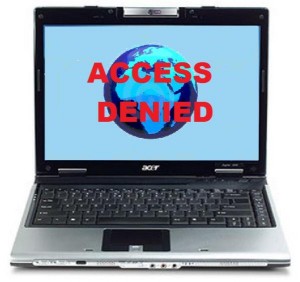Tackling the digital divide with cheaper services and better content
 The term “digital divide” is about who has, and who hasn’t got access to information and communications technologies such as the internet and mobile phones. And access doesn’t just mean actually having physical access (such as actually owning a phone, for example), access also means knowing how to use these technologies, and being able to afford to use them. There’s been a lot of progress in the developing world in bridging the digital divide, especially as mobile adoption rates have exploded over the past decade. But many challenges remain.
The term “digital divide” is about who has, and who hasn’t got access to information and communications technologies such as the internet and mobile phones. And access doesn’t just mean actually having physical access (such as actually owning a phone, for example), access also means knowing how to use these technologies, and being able to afford to use them. There’s been a lot of progress in the developing world in bridging the digital divide, especially as mobile adoption rates have exploded over the past decade. But many challenges remain.
Those challenges, and strategies to meet them, are the topic of a new report by the renowned American think-tank, the Brookings Institution. In the report, Darrell West, founding director of the organization’s Center for Technology Innovation, analyzes why some 4.3 billion people on the planet are still locked out of the digital revolution. onMedia put a few questions to West about what the divide is as wide as it is and what might be done about increasing connectivity in the developing world.
Is there one primary factor behind the divide? Or is it a combination of issues?
One of the largest barriers to internet access in the developing world is the high cost of devices and internet services. For many people, smartphones and tablets remain far beyond their financial means. And even if they can pay for a device, they cannot afford the telecommunications and data usage charges that are required to access the internet. Some governments also are worsening the cost situation by imposing new taxes on mobile devices or telecommunications fees. That makes it even more difficult to solve the affordability crisis in internet usage.
The biggest problem of the digital divide is all the people who are not reaping the benefits of the digital revolution. Increasingly, people are applying for jobs, getting educated, and accessing health information online. Those without internet connections are not able to do these things and this puts them at a disadvantage compared to others who are connected. That widens inequality and access to new digital tools.
You say it is especially important to make progress on digital access in the cases of India and China. Why?
Half of the world’s unconnected (2.2 of the 4.3 billion) live in China or India. This means that in order to solve the digital access problem, we have to pay particular attention to those countries. Each has a large number of people outside the technology revolution. Internet service providers and website operators need to provide content in the local languages common in those places and undertake steps that encourage a diverse and uncensored internet. In conjunction with addressing cost barriers, these steps will bring more people into the digital world and provide economic opportunities for those who go online.
Data charges are often cited as contributing to the digital divide. You’ve said zero-rating programs are effective ways to expand access. Can you explain?
Zero-rating programs help those who are poor in the developing world get access to services and information that otherwise would be too expensive. Telecommunications firms waive data caps for a range of basic services and this encourages greater internet usage. In combination with free wi-fi services, this can open up a range of websites and encourage them to become more active online.
You point to a diversification of content as key to bringing more people into the internet fold. What kind of content would be more appealing to those who are not online now?
People want to use the basic content that other people are accessing. They want to be able to apply online for jobs, check the weather, use social media and find necessary information. If they are in remote rural areas, internet access helps them broaden the marketplace and buy products outside their local village. Anything that broadens their horizons and gives them access to more diverse content is useful from their standpoint.
Problems of digital literacy and a fear of the internet, especially among older people, are cited as stumbling blocks. How can these problems be tackled?
Many elderly people in the developing world don’t know how to use computers or worry about the security of their online activities. They hear stories about hackers and think they may be victimized. We need educational programs that reach these individuals and give them the digital skills necessary to encourage safe, online participation. Older people want to use the internet to stay in touch with their children and grandchildren so that provides a means to get them to learn how to go online for basic information and services.
Darrell M. West is vice president and director of Governance Studies at Brookings and the founding director of the Center for Technology Innovation. He is also the editor-in-chief of the technology policy blog TechTank. His current research focuses on educational technology, health information technology, and mobile technology. He is the author or co-author of 20 books, including including Going Mobile: How Wireless Technology is Reshaping Our Lives, Digital Schools: How Technology Can Transform Education, and The Next Wave: Using Digital Technology to Further Social and Political Innovation. You can follow him on Twitter here.
Interview conducted by Kyle James, edited by Kate Hairsine
RELATED ONMEDIA POSTS
Getting online data to offline communities
What makes a person digitally literate?
Pictures: Darrell West, Brookings Institution; flickr.com/Mike Licht CC:BY




